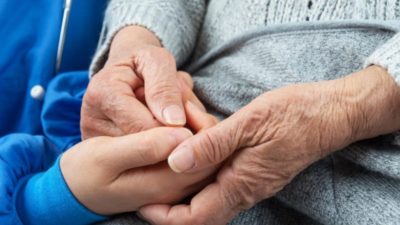
SEARCY, AR. (LP) — Physician-assisted suicide is a practice where an attending doctor has the legal authority to offer a lethal prescription medication to someone who is terminally ill. The patient must usually be in a state of suffering, and it is often required to make the request of their doctor more than once to have it become a solution. Most states in the U.S. prohibit a physician-assisted suicide, although Oregon, Washington, Vermont, California, and Colorado have all legalized the practice if a specific set of steps are followed. Hawaii joins this group of states in 2019. Even though it is considered illegal, The Hastings Center notes that empirical studies have shown the act of PAD (physician-assisted death) to be an underground practice that is not actively prosecuted if it is not actively discussed. Alternatives to a lethal prescription include sedation to keep someone unconscious until their bodies cease to work because of their terminal illness. Some patients even decide to voluntarily stop eating and drinking to prevent their end-of-life suffering. Because we should be offering people with a terminal illness the state-of-the-art palliative care they deserve, the pros and cons of legalizing physician-assisted suicide in the United States and around the world deserve some consideration. Since Oregon legalized physician-assisted suicide for the terminally ill in 1997, more than 700 people have taken their lives with prescribed medication — including Brittany Maynard, a 29-year-old with an incurable brain tumor, who ended her life earlier this month.
A student at Searcy High School who wants to stay anonymous states, “Helpless patients may be either abandoned or subjected to unwanted and unnecessary medical treatments.” Advocates of assisted-suicide laws believe that mentally competent people who are suffering and have no chance of long-term survival, should have the right to die if and when they choose. If people have the right to refuse life-saving treatments, they argue, they should also have the freedom to choose to end their own lives. Opponents say that such laws devalue human life. Medical prognoses are often inaccurate, they note — meaning people who have been told they will soon die sometimes live for many months or even years longer.
They also argue that seriously ill people often suffer from undiagnosed depression or other mental illnesses that can impair their ability to make an informed decision. Medical professionals supporting assisted dying suggest that even with the best palliative care, there will still be those

terminally ill patients who make a rational request for euthanasia. Modern palliative care may greatly reduce terminal suffering but may not always provide total relief of distressing symptoms and it is these patients that requests for assisted death are more prevalent. In Oregon, 80%–89% of patients who have died by assisted suicide had received hospice care. Another student at Searcy High says, “the two most common reasons that lead people to think about or to commit suicide, whether they are terminally ill or not, are untreated pain or depression.” There are concerns that legalisation of assisted dying would detract from the growing need for expanding palliative care services. However, the bill may have the opposite effect as all patients must have palliative care involvement before assisted dying taking place: similar requirements in the law in other countries (USA and Netherlands) where assisted suicide is legal have lead to an improvement and greater development of palliative care services. In contrast, it is argued that better terminal care and palliative care service development are what is needed rather than assisted dying: if patients have access to good quality palliative care at the end of life then assisted dying becomes unnecessary. Indeed, the Human Rights Act 1998 says that each person’s life shall be protected by law and that society has a duty to prevent or alleviate the situation that they find intolerable. One Dutch doctor has been quoted as saying “we don’t need palliative medicine, we practice euthanasia”. In countries where euthanasia or assisted suicide are legal, they are responsible for a total of between 0.3 and 4.6 percentTrusted Source of deaths, over 70 percent of which relate to cancer. In Oregon and Washington states, fewer than 1 percent of physicians write prescriptions that will assist suicide each year.
